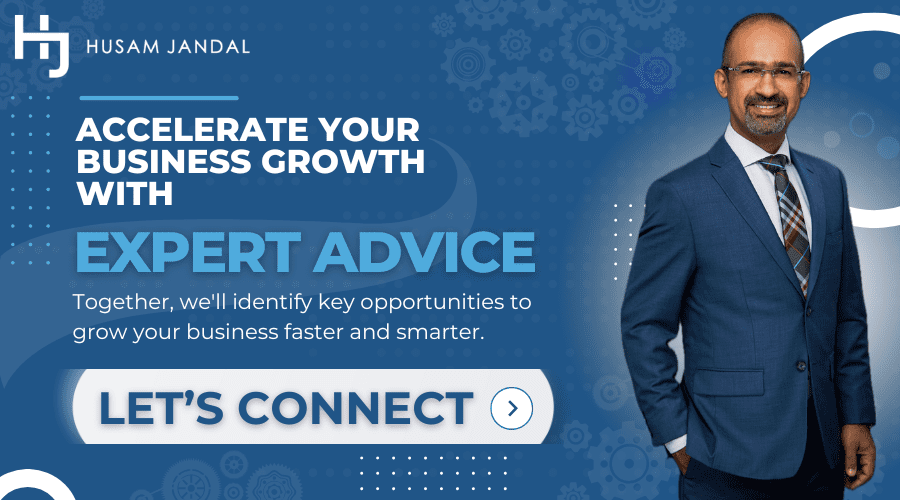
Are you struggling to close sales or not getting the close rates you want? Often, sales professionals will say it’s because they’re not getting the right leads, but the real problem is speed-to-lead.
We’ll go over what it means and how to address lead response management in just a moment, but before we begin, I want you to do a quick exercise. Go to your company’s website and fill out an inbound lead form or use a chatbot that creates a trigger for your sales team to call a prospect. Use a fictitious name but include real contact info they won’t easily identify as yours. Then, jot down the time your form was submitted. You’re going to use this information when you’re mapping out your steps at the end, so you’ll want to get the ball rolling now.
Ready to continue? Great!
What’s Speed-to-Lead?
Speed-to-lead is the amount of time that passes between new inbound leads reaching out to your business and the moment your team responds. This is why you submitted one of your own forms before starting. You’ll be measuring how long it takes for one of your salespeople to contact you.
Many business leaders think their speed-to-lead times are spot-on. After all, you’ve got a process in place, and your team seems to be following up quickly. The problem is, response times are rarely what stakeholders think they are and, unless you’re already using a sophisticated lead generation and tracking system, you don’t know what yours actually is. You’re about to give yourself some actionable data.
Why Does Speed-to-Lead Matter?
You intuitively know that the longer it takes to connect with a prospect, the more likely it is that your lead will have gone cold. Fixing leaks in your pipeline also helps ensure you maximize your marketing team’s opportunities to deliver to your sales department. But, speed-to-lead goes much deeper than this.
Speed-to-lead provides service on-demand.

The way people shop and make decisions has been rapidly changing since the Internet took hold. Nowhere is this more self-evident than within the B2B market. According to Forrester Research, more than 55 percent of buyers prefer to self-educate rather than receive information from a salesperson. It’s the “new normal” brought about by the copious amounts of material they can now find online, thanks to your SEO and content marketing efforts.
Chances are, you have two distinct types of lead generation forms on your website: offers of information and offers to connect with someone. Offers of information, sometimes called lead generation magnets, include things like whitepapers and guides that educate your prospect. At this stage, prospects are considered marketing-qualified leads.
The average B2B buyer consumes 13 pieces of content before they’re ready to convert, per FocusVision research. So, when a lead finally takes the initiative to engage in live chat or complete a lead generation form, and it’s clear you’ll be talking to them, they’re taking this step after completing research. They’re signaling that they’re ready to talk to someone now and moving forward with the lead qualification process.
In both these cases, the lead is choosing the service they want. To meet their expectations, you must deliver what they want when they want it (now).
Speed-to-lead increases the chances of first contact.
Your prospects don’t generally sign up or buy the first time interact with your brand. A typical customer journey looks something like this:
1. The customer realizes they have a problem and decides to solve it.
2. The customer begins looking for vendors who can solve the problem.
3. The customer creates a shortlist of potential solution providers.
4. The customer decides which of the shortlisted providers to work with.
Prospects don’t reach out to you until the third step of the sales process—when they’re creating a shortlist and deciding which one is best. Unfortunately, they’re also reaching out to your competitors at this stage and people usually choose the first option they’re presented with, researchers from UC Berkeley and Harvard conclude. In some studies, as many as two-thirds of consumers opt for whatever the choice may be. We see similar results in marketing. According to the Search Engine Journal over 25 percent of people automatically choose the first option in a Google search. Being the first vendor is a big deal. It helps you add more prospects to the top of the sales funnel and helps you close more deals at the bottom.
Speed-to-lead builds customer confidence.
I often speak about the importance of building trust and the role branding plays. If customer-centric values aren’t at the heart of your brand, they should be. Timely responses are a component of this. Your quick response tells the customer that you value them and their time. It also creates an unspoken promise that you’ll be there promptly as needed in the future. Slow responses, on the other hand, can cast doubt. If you can’t be counted upon to contact them to make a sale, why should they believe you’ll be there to support them after? Don’t leave them wondering. Provide the best possible service the first opportunity you’re given.
Speed-to-lead increases the likelihood of customer availability.
Your customer is reaching out to you now because they’re free now. An hour from now, they might be tending to their own customers. A few hours from now, they might be home with their family. Tomorrow they might be booked solid with meetings. You know the drill. A fast response means you’re catching them when they’re actively thinking about your brand and focused on finding a solution to their problem.
What’s a Good Speed-to-Lead?

If you read this straight through, it has likely been less than five minutes since you submitted your lead generation form. Approximately 26 percent will have already gotten a response from their sales team if trends identified by Harvard carry through. In all, 37 percent will hear back within the hour. The average response time, however, will be waiting a whopping 42 hours.
But, before you early birds start to pat yourselves on the back, you should know that faster isn’t always better. Historically, it was thought that businesses needed to respond within five minutes. However, newer research from the Telfer School of Management at the University of Ottawa shows that the likelihood of closing a deal is actually greatest when the sales representative contacts the prospect ten to 60 minutes after the lead is generated. Success rates peak around the 30-minute mark. That said, if you’re forced to choose between an immediate call and one placed more than an hour later, it’s still better to reach out right away.
It’s also worth noting that you shouldn’t expect to close the deal on the first call. While there are success stories that end this way, it takes an average of 5.7 follow-ups to secure a positive outcome in the B2B sector.
How to Improve Your Lead Response Time
With around two-thirds failing their speed-to-lead tests, improving lead response time will be the focus for many. Here are a few things you can do about yours.
Route web leads effectively.
Automate as much as you can to ensure hot leads are going to the right person in real-time. Avoid having middlemen or gatekeepers pass off leads. If your current CRM or lead management platform doesn’t make this easy or it can’t sort by information such as company size, location, and industry before assigning a lead to a sales representative, look for an alternative that does.
Leverage templates.
Stage a variety of email and text message templates as well as sales scripts to suit different situations in advance. Make sure email responses can be tailored or customized easily to speed your response times without sacrificing personalization.
Identify a follow-up flow.
Because it takes nearly six follow-ups to secure a positive outcome, your team will need to have a schedule in place. For example, you may want to call right away and send an immediate email, then send a text message after 24 hours and make a call again at 48 or use email automation to keep leads warm. The ideal flow and follow-up process will vary by industry, company, and product. Once you’ve set yours, automate it as much as possible, down to delivering the leads to your reps for follow-up at the ideal intervals.
Measure your results.
Track details like your average lead response time, number of interactions, and success rates of each and share them with your sales reps. Work together to identify and implement solutions if you’re not meeting your targets.
Enlist the Help of a Specialist
Speed-to-lead is an important factor, but it’s not the only thing that influences the success of your sales team and it’s not always easy to correct even when you know your slow response times are hurting business growth. As a digital marketing specialist with a background in business, I’ve helped countless businesses from startups through Fortune 100 companies refine their processes to achieve new heights. I’d like to help your business too. If you want to close more sales and grow a stronger company, contact me for a complimentary consultation.





































































